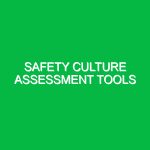In today’s increasingly regulated environment, Safety Compliance for Small Businesses is not just a legal obligation but a cornerstone of operational integrity and employee well-being. The concept encompasses a set of standards, regulations, and practices designed to ensure a safe working environment. For small businesses, the stakes are high; non-compliance can lead to fines, legal action, and, most importantly, harm to employees. This article delves into the critical aspects of safety compliance, the potential hazards small businesses face, and actionable best practices to foster a safe workplace.
What is Safety Compliance for Small Businesses?
Safety compliance refers to adherence to laws, regulations, and guidelines that govern workplace safety. For small businesses, this means implementing policies and practices that not only comply with legal standards but also proactively protect employees and customers. The Health, Safety, and Environment (HSE) domain covers a broad spectrum of issues, including occupational health, environmental protection, and safety management. Compliance is not merely about following the law; it is about creating a culture of safety that permeates the organization.
Importance of Safety Compliance in HSE
The relevance of safety compliance in the HSE domain cannot be overstated. Small businesses often operate with limited resources, and a single incident can have devastating repercussions. According to the Occupational Safety and Health Administration (OSHA), work-related injuries and illnesses cost U.S. businesses over $1 billion per week. By prioritizing safety compliance, small businesses can mitigate these risks, enhance employee morale, and safeguard their reputation.
Identifying Potential Hazards and Risks
Understanding the common hazards associated with your industry is the first step toward effective safety compliance. Here are some prevalent hazards that small businesses may encounter:
1. Physical Hazards
These include slips, trips, and falls, which are among the most common workplace injuries. Poorly maintained walkways, inadequate lighting, and cluttered workspaces can create dangerous conditions. For example, an employee in a small restaurant might slip on a wet floor, resulting in injury and potential legal action.
2. Chemical Hazards
Small businesses that work with chemicals must be particularly vigilant. Exposure to hazardous substances can lead to respiratory issues, skin irritation, or more severe health problems. A small cleaning company using industrial cleaning agents without adequate ventilation might expose employees to harmful fumes.
3. Ergonomic Hazards
Workplaces that do not consider ergonomic principles can lead to musculoskeletal disorders. For instance, an office worker spending hours hunched over a desk may begin to experience back pain or repetitive strain injuries.
4. Biological Hazards
In industries like healthcare or food service, biological hazards such as bacteria and viruses are a significant concern. An outbreak of illness can not only affect employees but also lead to substantial financial losses.
5. Psychosocial Hazards
Workplace stress, harassment, and bullying can create a toxic work environment. The mental health of employees is just as crucial as their physical safety. A small tech startup that fosters a high-pressure environment may see increased turnover and decreased productivity.
Best Practices and Safety Precautions
Addressing potential hazards requires a proactive approach. Here are some best practices small businesses can adopt to ensure safety compliance:
1. Conduct Regular Risk Assessments
Regularly evaluate the workplace for potential hazards. This involves not only identifying risks but also assessing the likelihood and severity of incidents. A practical example is a small manufacturing plant that conducts quarterly safety audits, allowing them to address issues before they escalate.
2. Develop a Safety Plan
Creating a comprehensive safety plan is essential. This plan should outline safety policies, emergency procedures, and training protocols. For instance, a small construction firm could establish a plan that includes fall protection measures, equipment inspections, and incident reporting procedures.
3. Employee Training and Involvement
Training employees is vital in fostering a safe workplace. Regular safety training sessions can empower employees to recognize hazards and respond appropriately. For example, a small bakery could implement monthly training on safe equipment usage, ensuring everyone understands the risks involved.
4. Promote a Safety Culture
Encouraging a culture of safety means integrating safety into every aspect of the business. This could involve regular safety meetings or recognition programs for employees who prioritize safety. A small retail store might celebrate employees who consistently follow safety protocols, reinforcing the importance of compliance.
5. Utilize Safety Equipment
Providing employees with the necessary safety equipment is non-negotiable. This includes personal protective equipment (PPE) such as gloves, helmets, or goggles. A small landscaping business, for instance, should ensure that all workers have access to appropriate gear to protect against outdoor hazards.
Understanding Regulations and Standards
Compliance with regulations is critical for small businesses. Here are some key regulations and standards to be aware of:
1. Occupational Safety and Health Administration (OSHA)
OSHA sets and enforces standards to ensure safe working conditions. Small businesses must familiarize themselves with OSHA regulations relevant to their industry and maintain records of workplace injuries and illnesses.
2. Environmental Protection Agency (EPA)
For businesses that handle chemicals or waste, adherence to EPA regulations is essential. This includes proper waste disposal methods and guidelines for reducing environmental impact.
3. Americans with Disabilities Act (ADA)
Ensuring accessibility for employees with disabilities is another crucial aspect of compliance. Small businesses should assess their facilities to ensure they meet ADA standards, promoting an inclusive workplace.
Conclusion: The Path to Compliance and Safety
Safety compliance for small businesses is not just a checkbox; it is a fundamental aspect of running a successful operation. By understanding potential hazards, implementing best practices, and adhering to regulatory standards, small businesses can create a safer work environment. This commitment not only protects employees but also fosters a culture of safety that can contribute to overall business success.
As a small business owner or manager, the responsibility lies with you to prioritize safety compliance. It may seem daunting, but the benefits far outweigh the challenges. With a proactive approach, you can navigate the complexities of HSE compliance and create a workplace where safety is paramount.


